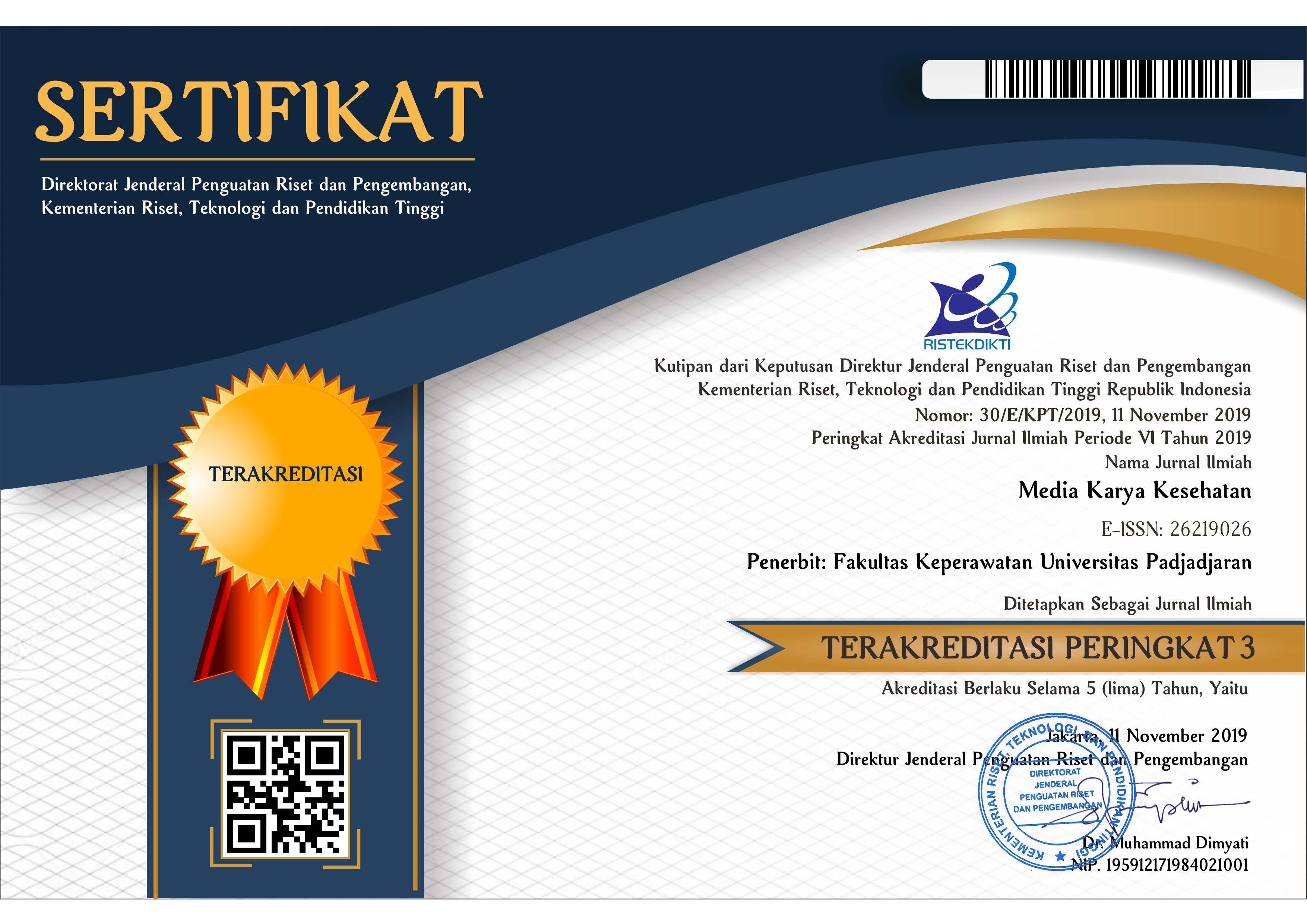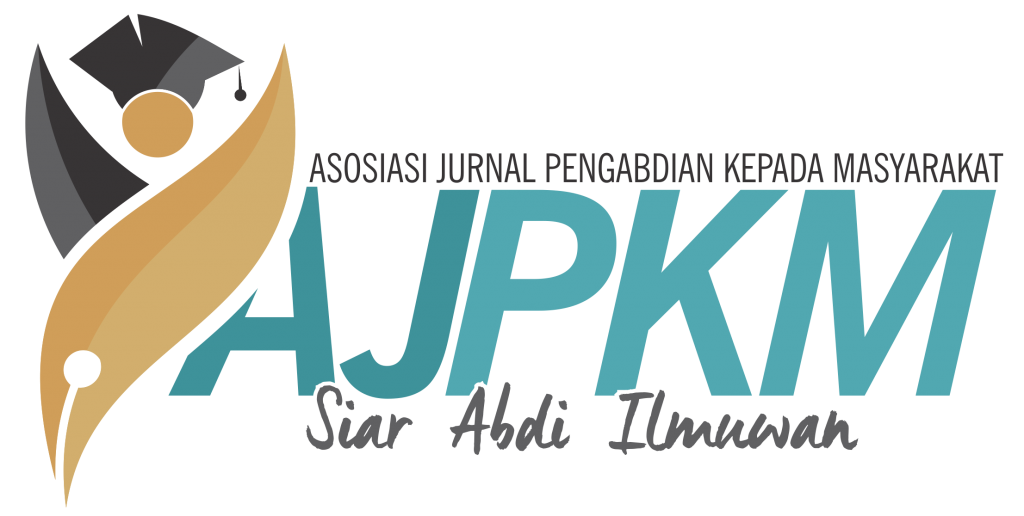Differences in Function of the Urinary Tract Before and After Pelvic Floor Muscle Exercise (PFME) in Pregnant Women
Abstract
Physiological changes that occur during pregnancy affect the entire woman's body, especially the digestive, respiratory, cardiovascular, skin, hormonal, metabolic, musculoskeletal, breast, immune and reproductive systems, felt in the external and internal genital areas. Common symptoms during pregnancy include changes in urinary tract function (urinating). One feasible physiological therapy is pelvic floor muscle training. This can strengthen the muscles around the reproductive organs and increase muscle tone. The aim of the research was to analyze differences in urinary tract function (mixi) in pregnant women before and after pelvic floor muscle training. This research method was carried out using a two-group pretest, posttest design. The research sample was pregnant women. A total of 60 people responded and activities were carried out for 6 days on 8-13 November 2022. Before and after PFME was carried out, urinary frequency and urine output were measured using a tool. The results showed that there was no difference in urinary frequency between the control and intervention groups (p = 0.664), and there was no difference in urine volume during urination between the control and intervention groups (p = 0.270). In the PFME intervention, there was no difference in urinary frequency between the control group and the intervention group (P = 0.566). There was a difference in urine volume when urinating between the control group and the intervention group (p=0.004). Therefore, to improve urinary tract function in pregnant women and thereby improve their quality of life, PFME should be included in the schedule to provide planned and daily physical activity and exercise.
Keywords: Pregnancy, PFME, urinary tract (Miction)
Full Text:
PDFReferences
Agus Riyanto (2011) Aplikasi Metodologi Penelitian Kesehatan. Yogjakarta: Nuha Medika.
Agustina, A. N., Tavip Dwi Wahyuni, B., Pranata, L., Damayanti, D., Pangkey, B. C., Indrawati, I., ... & Ernawati, N. (2022). Anatomi Fisiologi. Yayasan Kita Menulis.
Ajul, K., Pranata, L., Fari, A. I., Windahandayani, V. Y., & Indaryati, S. (2022). Pelvic Floor Muscule Exercise (PEME) Terhadap Fungsi Traktus Urinarius (MIKSI) pada Lansia. SEHATMAS: Jurnal Ilmiah Kesehatan Masyarakat, 1(3), 440-445.
Arikunto, S. (2006) Metode Penelitian Kualitatif. Jakarta: Bumi Aksara.
Astuti, Y. D. R. & A. (2021) Asuhan Kehamilan. Medan: Yayasan Kita Menulis.
Ayu, I. (2016) Asuhan Kebidanan Pada Masa Kehamilan. Jawa Barat: LovRinz Publishing.
Baert, A. L., & M. K. (2010) Imaging Pelvic Floor Disorders. Germany: Springe.
Baessler, K., Schussler, B., Burgio, K. L., H.Moore, K., Norton, P. A., & Stantion, S. L. (2012) Pelvic Floor Re-education (edisi 2). London: Springer- Verlag.
Barber, M.D., Visco, A.G., Wyman, J.F., Fantl, J.A. and Bump, R. C. (2002) ‘Sexual Function in Women with Urinary Incontinence and Pelvic Organ Prolapse. Obstetrics & Gynecology’. Available at: http://dx.doi.org/10.1016/S0029-7844(01)01727-6.
Bladder & Bowel Community (2019) ‘Pelvic Floor Exercises’, UK. Retrieved from https://www.bladderandbowel.org/help-information/resources/pelvic-floor-exercises/.
Bladder and Bowel Community (2013) ‘Bladder and Bowel Community After an Anterior and Posterior Vaginal surgery’, b&b, (November).
Clinicians from Physical Therapy and Rehabilitation at, & Center (2016).
DeLancey, J. O. L. (1994) Functional anatomy of the pelvic floor and urinary continence mechanism In: Schüssler B, Laycock J, Norton P, Stanton S, editors. Pelvic floor re-education: principles and practice. Edited by S. S. Schüssler B, Laycock J, Norton P. London: Springer-Verlag.
Dewi, Mustika (2017) ‘The Influence of Early Ambulation " Pelvic Floor Muscle Training " on Prevention of Defecation Disorder Post Partum’, Journal Of Issues in Mideifery, pp. 1–7.
Dewi, M (2017) ‘The Influence of Early Ambulation " Pelvic Floor Muscle Training " on Prevention of Defecation Disorder Post Partum’, Journal Of Issues in Mideifery, pp. 1–7.
Farahman, et al. (2015) ‘Pelvic Floor Muscle Exercise for Paediatric Functional Constipation’, 9(6), pp. 16–17. Available at: https://doi.org/10.7860/JCDR/2015/12726.6036.
Herschorn. S (2004) ‘Female pelvic floor anatomy : the pelvic floor, supporting structers and pelvic organs’, Journal national library of medicine. Available at: https://www.ncbi.nlm.nih.gov/pmc/articles/PMC1472875/.
Leach, G., and Haab, F. (1998) ‘Female pelvic anatomy for the modernday urologist. Contemporary Urology Archive’. Available at: http://www.contemporaryurology.com/be_core/content/journals/u/ data/1998/0800/u8a042.html.
LeMone P, Burke MK, B. G. (2016) Keperawatan medikal bedah: gangguan gastrointestinal. 5th edn. Jakarta: EGC.
Lichayati & Ratih (2013) ‘Hubungan Senam Hamil dengan Nyeri Punggung pada Ibu Hamil di Polindes Desa Tlanak Kecamatan Kedungpring’, 1(14).
Lin K, Granger CL, Denehy L, F. H. (2015) Pelvic floor muscle training for bowel dysfunction following colorectal cancer surgery : a systematic review.
Miratau, M. (2014) Panduan Asuhan Kebidanan. Yogjakarta: Deepublish.
Mostofsky, E., Laier, E., Levitan, E. B., Schlaug, W. D. R. G., & M. (2016) ‘Physical Activity and Onset of Acute Ischemic Stroke.’, American Jurnal Epidemiologi.
Norving, B. (2012) Classification of stroke subtypes Stroke. Switzerland: Karger.
Notoatmodjo, S. (2018) Metodelogi Penelitian Kesehatan. Jakarta: Rineka Cipta.
Nugrawati, N. & A. (2021) Buku Ajar Asuhan Kebidanan Pada Kehamilan. Jawa Barat: CV. Adanu Abimata.
Pranata, L. (2020). Fisiologi 1.
Pelvic floor first (2016) Pelvic Floor Muscules. Australia. Available at: http://www.pelvicfloorfirst.org.au/pages/men.html.
Perry, P., & H. (2017) Dasar-dasar Keperawatan. Elsevier.
Pribakti. (2011) Dasar-dasar uroginekologi. Jakarta: Sagung Seto.
Rani, D. M., Pranata, L., Anggraini, N. L., Siringoringo, L., Aji, Y. G. T., Rahmi, U., ... & Purba, D. H. (2022). Anatomi Fisiologi Tubuh Manusia. Yayasan Kita Menulis.
Reeder, S.J., Martin, L.L., & Griffin, D. K. (2011) Keperawatan maternitas : Kesehatan wanita, bayi & keluarga. Jakarta: EGC.
Resnick (1998) Phisiology of micturition. In: Osteogard DR, Bent AE, editors. Urogynecology and urodynamics: theory and Practice. Baltimore: Williams & Wilkins.
Sastroasmoro, S., dan Ismael, S. (2011) Dasar-dasar Metodelogi Penelitian Klinis, (Edisi-4). Jakarta: Sagungn Seto.
Siregar. Syofian (2014) Metode penelitian kuantitatif dilengkapi dengan perbandingan perhitungan manual dan SPSS. Jakarta: Kencana.
Smeltzer, S. C., Bare, B. G., Hinkle, J. L., & Cheever, K. H. (2010) Brunner & Suddarth’s textbook of medical-surgical nursing (12th ed.). Philadelphia: Lippincott Williams & Wilkins.
Sukarni dan Wahyu (2013) Buku Ajar Keperawatan Maternitas. Yogjakarta: Nuha Medika.
The International Urogynecological Association (IUGA). (2017) ‘Constipation.’ Available at: https://www.yourpelvicfloor.org/conditions/constipation/.
Wagey, F. W. (2011) Senam Hamil Meningkatkan Antioksidan Enzimatik, Kekuatan Otot Panggul, Kualitas Jasmanin dan Menurunkan Kerusakan Oksidatif pada Wanita Hamil. Denpasar: Universitas Udayana.
Walyani, E. S. (2015) Asuhan Kebidanan pada Kehamilan. Yogjakarta: Pustaka Baru.
Widatiningsih, S dan Dewi, C. H. . (2017) Praktik Terbaik Asuhan Kehamilan. Yogjakarta: Trans Medika.
Windahandayani, V. Y., Siswadi, Y., & Tijtra, E. (2021) ‘Efektivitas Latihan Otot Dasar Panggul dalam Mencegah Konstipasi Pasien Stroke Non Hemoragik Effectiveness of Pelvic Floor Muscle Exercise to Prevent Constipation in Non-Hemorrhagic Stroke Patients’, Jurnal Kedokteran Meditek, 27(1), pp. 16–21. Available at: http://ejournal.ukrida.ac.id/ojs/index.php/Meditek/article/view/1924/1918.
Windahandayani, V. Y., Siswadi, Y. and Tijtra, E. (2021) ‘Efektivitas Latihan Otot Dasar Panggul dalam Mencegah Konstipasi Pasien Stroke Non Hemoragik Effectiveness of Pelvic Floor Muscle Exercise to Prevent Constipation in Non-Hemorrhagic Stroke Patients’, Jurnal Kedokteran Meditek, 27(1), pp. 16–21.
Wulandari Catur Leny & Linda Risyati (2021) Asuhan Kehamilan Kebidanan. Jawa Barat: CV. Media Sains Indonesia.
Wyman, J. F. (2003) ‘Treatment of urinary incontinence in man and woman. The American Journal of Nursing’.
Yunida, A. J. & (2021) Buku Ajar Asuhan Kebidanan Pada Masa Nifas. Yogjakarta: Deepublish Publisher.
DOI: https://doi.org/10.24198/.v7i1.44809
DOI (PDF): https://doi.org/10.24198/.v7i1.44809.g22513
Refbacks
- There are currently no refbacks.
JURNAL INI TERINDEKS DI:









Penerbit :
Fakultas Keperawatan, Universitas Padjadjaran
Jalan Raya Bandung-Sumedang Km. 21 Jatinangor, Sumedang, Indonesia 45363
WA: 085317736810
Tlp. 022-7795596
Email: info.mkk.keperawatan@unpad.ac.id
Email: novita.trivita@gmail.com

This work is licensed under a Creative Commons Attribution-NonCommercial 4.0 International License



